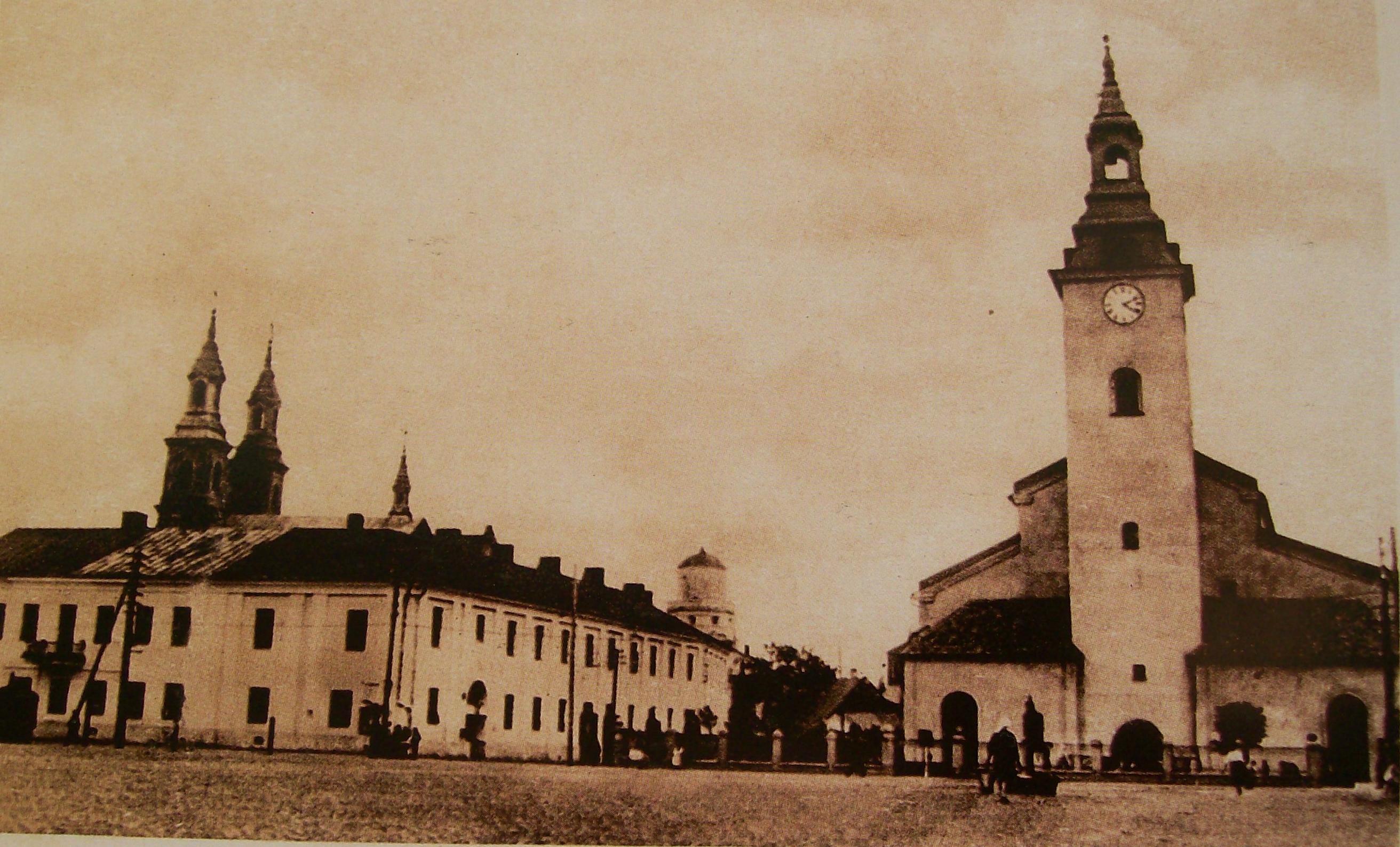|
Sieradz Voivodeship
Sieradz Voivodeship () was a unit of administrative division and local government in Poland in the years 1975–1998, superseded by Łódź Voivodeship. A Voivodeship is an area administered by a voivode (Governor), and the Sieradz Voivodeship is the area with the capital city of Sieradz. Sieradz is a significant city of Poland as it is one of the oldest cities of the country, tracing back roughly to the 6th century. 1975-1998 Capital city: Sieradz Major cities and towns: (population in 1995): * Zduńska Wola (45,900); * Sieradz (44,700); * Wieluń (25,500); * Łask (20,200). See also: * Voivodeships of Poland 1939-1945 The city of Sieradz was attacked by Germany on September 9, 1939, and was reluctantly home to one of many overpopulated German prisoner-of-war camps. In these camps occurred countless atrocities including torture, slavery/forced labor, starvation, unsafe conditions, beatings, executions, and any more of the common war crimes committed by the German army du ... [...More Info...] [...Related Items...] OR: [Wikipedia] [Google] [Baidu] |
Sieradz Voivodship 1975
Sieradz ( la, Siradia, yi, שעראַדז, שערעדז, שעריץ, german: 1941-45 Schieratz) is a city on the Warta river in central Poland with 40,891 inhabitants (2021). It is the seat of the Sieradz County, situated in the Łódź Voivodeship. Historically it was the capital of one of the minor duchies in Greater Poland. It is one of the oldest cities in Poland. Sieradz was an important city of medieval Poland, thrice being a location for the election of the Polish monarchs. Polish Kings chaired six assemblies from here. History The oldest settlements can be roughly traced back to the 6th century. The oldest known mention of Sieradz comes from the '' Bull of Gniezno'' from 1136. In the mid 13th century it was conferred with municipal rights by Duke Casimir I of Kuyavia. It had also welcomed many settlers from Scotland and the Netherlands after the 13th century. During the fragmentation of Poland, initially it was part of the Seniorate Province, and then from 1231 ... [...More Info...] [...Related Items...] OR: [Wikipedia] [Google] [Baidu] |
Poland
Poland, officially the Republic of Poland, , is a country in Central Europe. Poland is divided into Voivodeships of Poland, sixteen voivodeships and is the fifth most populous member state of the European Union (EU), with over 38 million people, and the List of European countries by area, seventh largest EU country, covering a combined area of . It extends from the Baltic Sea in the north to the Sudetes and Carpathian Mountains in the south, bordering seven countries. The territory is characterised by a varied landscape, diverse ecosystems, and Temperate climate, temperate transitional climate. The capital and List of cities and towns in Poland, largest city is Warsaw; other major cities include Kraków, Wrocław, Łódź, Poznań, and Gdańsk. Prehistory and protohistory of Poland, Humans have been present on Polish soil since the Lower Paleolithic, with continuous settlement since the end of the Last Glacial Period over 12,000 years ago. Culturally diverse throughout ... [...More Info...] [...Related Items...] OR: [Wikipedia] [Google] [Baidu] |
Łódź Voivodeship
Łódź Voivodeship (also known as Lodz Province, or by its Polish language, Polish name ''Województwo łódzkie'' ) is a province-Voivodeships of Poland, voivodeship in central Poland. It was created on 1 January 1999 out of the former Łódź Voivodeship (1975–1999) and the Sieradz Voivodeship, Sieradz, Piotrków Voivodeship, Piotrków Trybunalski and Skierniewice Voivodeships and part of Plock Voivodeship, Płock Voivodeship, pursuant to the Polish local government reforms adopted in 1998. The province is named after its capital and largest city, Łódź, pronounced . Łódź Voivodeship is bordered by six other voivodeships: Masovian Voivodeship, Masovian to the north and east, Świętokrzyskie Voivodeship, Świętokrzyskie to the south-east, Silesian Voivodeship, Silesian to the south, Opole Voivodeship, Opole to the south-west, Greater Poland Voivodeship, Greater Poland to the west, and Kuyavian-Pomeranian Voivodeship, Kuyavian-Pomeranian for a short stretch to the north. ... [...More Info...] [...Related Items...] OR: [Wikipedia] [Google] [Baidu] |
Sieradz
Sieradz ( la, Siradia, yi, שעראַדז, שערעדז, שעריץ, german: 1941-45 Schieratz) is a city on the Warta river in central Poland with 40,891 inhabitants (2021). It is the seat of the Sieradz County, situated in the Łódź Voivodeship. Historically it was the capital of one of the minor duchies in Greater Poland. It is one of the oldest cities in Poland. Sieradz was an important city of medieval Poland, thrice being a location for the election of the Polish monarchs. Polish Kings chaired six assemblies from here. History The oldest settlements can be roughly traced back to the 6th century. The oldest known mention of Sieradz comes from the '' Bull of Gniezno'' from 1136. In the mid 13th century it was conferred with municipal rights by Duke Casimir I of Kuyavia. It had also welcomed many settlers from Scotland and the Netherlands after the 13th century. During the fragmentation of Poland, initially it was part of the Seniorate Province, and then from 1231 it ... [...More Info...] [...Related Items...] OR: [Wikipedia] [Google] [Baidu] |
Zduńska Wola
Zduńska Wola is a city in central Poland with 40,730 inhabitants (2021). It is the seat of Zduńska Wola County in the Łódź Voivodeship. The city was once one of the largest cloth, linen and cotton weaving centres in Poland and is the birthplace of Saint Maximilian Kolbe and Maksymilian Faktorowicz, the founder of Max Factor cosmetics company. History Early history The city was first mentioned and documented in 1394. Zduńska Wola was then part of an important trade route which crossed through Poland and connected Eastern and Western Europe. Administratively it was located in the Sieradz Voivodeship in the Greater Poland Province of the Kingdom of Poland. Over the course of its history, the town was owned by nobles or industrialists and eventually transformed into a shtetl. At the beginning of the 18th century, Zduńska Wola was purchased by the aristocratic Złotnicki family. The development of the village is closely linked with the rapid influx of Silesian weav ... [...More Info...] [...Related Items...] OR: [Wikipedia] [Google] [Baidu] |
Wieluń
Wieluń ( la, Velun) is a town in south-central Poland with 21,624 inhabitants (2021). Situated in the Łódź Voivodeship (since 1999), it was previously in Sieradz Voivodeship (1975–1998). Wieluń has a long and rich history. In the past, it used to be an important urban trade centre of the Kingdom of Poland. Several Polish kings and notables visited the town, but following the catastrophic Swedish Deluge (1655–1660), Wieluń declined and never regained its status. In September 1939, during the invasion of Poland, it was heavily bombed by the Luftwaffe. The Bombing of Wieluń is considered to be the first World War II bombing in Europe. It killed at least 127 civilians, injured hundreds more and destroyed the majority of the town. Origin of the name Wieluń was first mentioned in a 1282 document as Velun (in 1283: Vilin). The exact origin of the name has not been explained. Historians claim that either it comes from a Slavic word "vel" (which means a wetland), or fro ... [...More Info...] [...Related Items...] OR: [Wikipedia] [Google] [Baidu] |
Łask
Łask (; german: Lask) is a town in central Poland with 16,925 inhabitants (2020). It is the capital of Łask County, and is situated in Łódź Voivodeship (since 1999), previously in Sieradz Voivodeship (1975–1998). The Polish Air Force's 32nd Air Base is located nearby. Vassal of Zduńska Wola. History Łask was founded in the 11th century, and from the 14th century it was the seat of the powerful Łaski noble family. Korab, the family's coat of arms, remains the town's coat of arms to this day. The first mention of Łask comes from 1356. A church was built in 1366, and in 1498 Polish prince and Primate of Poland Frederick Jagiellon founded a hospital for the poor. In 1422 it was granted town rights modeled on Środa Śląska by virtue of a document issued by Polish king Władysław II Jagiełło in Mielno. The king also set up an annual fair and a weekly market. In 1504, King Alexander Jagiellon confirmed and extended the privileges.''Słownik geograficzny Królestwa Pols ... [...More Info...] [...Related Items...] OR: [Wikipedia] [Google] [Baidu] |
Voivodeships Of Poland
A voivodeship (; pl, województwo ; plural: ) is the highest-level administrative division of Poland, corresponding to a province in many other countries. The term has been in use since the 14th century and is commonly translated into English as "province". The administrative divisions of Poland, Polish local government reforms adopted in 1998, which went into effect on 1 January 1999, created sixteen new voivodeships. These replaced the 49 subdivisions of the Polish People's Republic, former voivodeships that had existed from 1 July 1975, and bear a greater resemblance (in territory, but not in name) to the voivodeships that existed between 1950 and 1975. Today's voivodeships are mostly named after historical and geographical regions, while those prior to 1998 generally took their names from the cities on which they were centered. The new units range in area from under (Opole Voivodeship) to over (Masovian Voivodeship), and in population from nearly one million (Opole Voivodes ... [...More Info...] [...Related Items...] OR: [Wikipedia] [Google] [Baidu] |
Greater Poland
Greater Poland, often known by its Polish name Wielkopolska (; german: Großpolen, sv, Storpolen, la, Polonia Maior), is a historical region of west-central Poland. Its chief and largest city is Poznań followed by Kalisz, the oldest city in Poland. The boundaries of Greater Poland have varied somewhat throughout history. Since the Middle Ages, Wielkopolska proper has been split into the Poznań and Kalisz voivodeships. In the wider sense, it also encompassed Sieradz, Łęczyca, Brześć Kujawski and Inowrocław voivodeships, which were situated further eastward. After the Partitions of Poland at the end of the 18th century, Greater Poland was incorporated into Prussia as the Grand Duchy of Posen. The region in the proper sense roughly coincides with the present-day Greater Poland Voivodeship ( pl, województwo wielkopolskie). Like the historical regions of Pomerania, Silesia, Mazovia or Lesser Poland, the Greater Poland region possesses its own distinctive folk costum ... [...More Info...] [...Related Items...] OR: [Wikipedia] [Google] [Baidu] |
Former Voivodeships Of Poland (1975–1998)
A former is an object, such as a template, gauge or cutting die, which is used to form something such as a boat's hull. Typically, a former gives shape to a structure that may have complex curvature. A former may become an integral part of the finished structure, as in an aircraft fuselage, or it may be removable, being using in the construction process and then discarded or re-used. Aircraft formers Formers are used in the construction of aircraft fuselage, of which a typical fuselage has a series from the nose to the empennage, typically perpendicular to the longitudinal axis of the aircraft. The primary purpose of formers is to establish the shape of the fuselage and reduce the column length of stringers to prevent instability. Formers are typically attached to longerons, which support the skin of the aircraft. The "former-and-longeron" technique (also called stations and stringers) was adopted from boat construction, and was typical of light aircraft built until the a ... [...More Info...] [...Related Items...] OR: [Wikipedia] [Google] [Baidu] |




